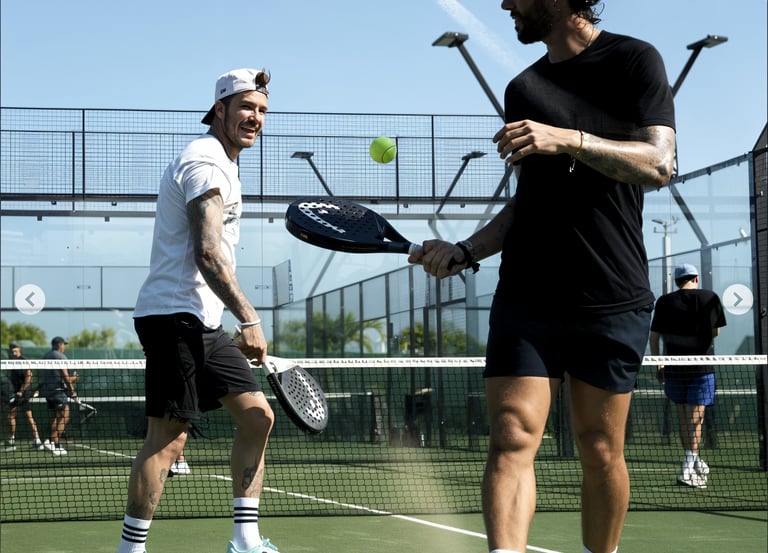How To Play Padel
Scoring
Padel uses the same scoring system as tennis (15, 30, 40, game, deuce, advantage, set). Matches are typically best of three sets.
Walls are Your Friends
This is where Padel gets interesting! After the ball bounces once on the ground in your court, you can hit it directly over the net or allow it to bounce off one or more walls before returning it. However, the ball cannot bounce twice on the ground on your side. If the ball hits a wall before bouncing on the ground on the opponent's side, it's a fault.
Serve
The serve is always underhand. The player must bounce the ball once behind the service line and hit it diagonally into the opponent's service box, at or below waist level. Players get two attempts.
Padel rackets are solid, without strings, and often have holes. They are typically made from materials like carbon, fiberglass, and EVA foam.
No Strings Attached

Why Padel is So Addictive, Fun, and Easy to Pick Up?
Padel's rapid rise in popularity is no accident. It boasts several qualities that make it incredibly appealing.


Social & Collaborative
Padel is inherently a social sport. Always played in doubles, it fosters teamwork, communication, and camaraderie. It's a fantastic way to connect with friends, family, and meet new people.
Engaging and Dynamic
The enclosed court and the use of walls create longer, more strategic rallies. There's constant movement, quick reactions, and tactical thinking involved, keeping you mentally and physically engaged.
Easy to Learn, Hard to Master:
Unlike tennis, the underhand serve and the use of walls make it much easier for beginners to get rallies going quickly. You can be playing points and having fun within minutes of stepping on a court, regardless of your prior racket sport experience.
The smaller court and solid rackets make it less physically demanding than tennis, allowing a wider range of ages and fitness levels to enjoy the game.
Accessible to All Ages and Skill Levels
Padel provides a great full-body workout, improving endurance, cardiovascular health, speed, and strength. Mentally, it sharpens your tactical thinking, reaction time, and communication skills. Plus, the sheer joy of playing releases mood-boosting hormones!


